When you hear the word "brand," you may think of large mega-brands like Apple, Coca-Cola, or Nike. But in reality, every organization, no matter the size, has a brand. A solopreneur has a brand. A mom-and-pop sandwich shop has a brand. An educational institution has a brand. A nonprofit has a brand. A manufacturer with multiple product lines has a brand (and sub-brands). A brand is a promise of what your company delivers to its constituents. It's a company's reputation and it is the starting point for strategic planning.
Branding is Essential for Business
Branding shapes perception, builds loyalty, and establishes a unique market presence. A strong brand strategy drives growth, boosts competitiveness, and sets you apart in the market. In a tough market, branding differentiates you. It creates a recognizable identity, aiding customer recall. Brands forge emotional connections, evoking positive emotions for loyalty. A well-crafted brand enhances product value. A reputable brand signifies quality, reliability, and prestige.
Brand Guidelines
Because having a solid brand is so critical to business success, all companies benefit from documenting their brand with brand guidelines. Brand guidelines, also known as a brand book, brand manual or style guide, is a comprehensive document that outlines the specifications and rules for maintaining a cohesive brand identity. A brand book is a reference tool for anyone in your organization involved in creating content, designing materials, or representing your brand in any capacity.
The primary purpose of brand guidelines is to ensure that your brand's visual and verbal elements are used consistently across all marketing and communication channels, both internally and externally. Your brand guidelines are an essential tool for maintaining brand integrity and creating a solid and recognizable brand in the eyes of customers. This will create a more memorable and impactful presence in the market.
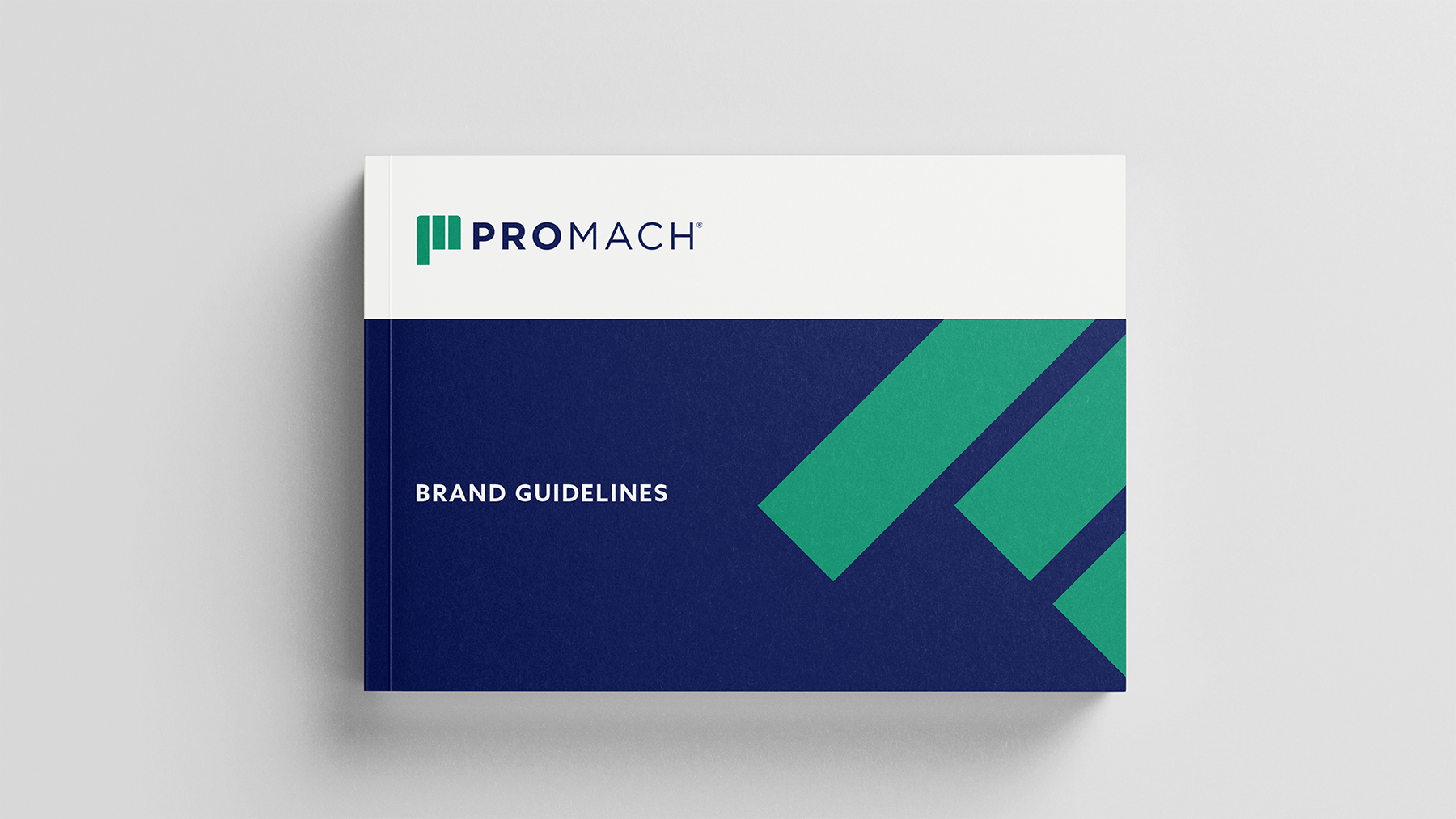
The Benefits of Brand Guidelines
Brand books are crucial tools for establishing a strong and consistent brand identity. Here are some additional benefits of brand guidelines:
Internal Brand Advocacy: Brand guidelines are not just for external use. They also educate employees about the brand's identity, values, and guidelines. This helps employees understand and embrace the brand's vision and mission. It helps them align their work with the brand's objectives. An informed employee can be an advocate for your brand.
Brand Evolution: As your business grows, your brand identity may evolve. Brand guidelines provide a foundation for that evolution while retaining critical core elements. This allows you to refresh your branding without losing brand awareness and recognition or confusing customers.
Brand Collaboration: If you partner with other businesses, brand guidelines ensure that your brand's identity remains intact during joint ventures or co-marketing efforts. It will help you maintain a consistent image and message even when multiple entities are involved.
Brand Protection: A brand book helps protect your brand from misuse or misrepresentation. By clearly defining brand guidelines, you can avoid unauthorized employees or partners misusing your brand assets, which can damage your company's reputation.
Brand Extension: When introducing new products, services, or ventures under your brand umbrella, brand guidelines are a foundation to maintain cohesion with your existing brand identity.
Design and Marketing Efficiency: Brand guidelines provide clear instructions on color schemes, typography, and design elements. This reduces the time and effort spent creating new materials and ensures they remain consistent with the brand's image.
Brand Awareness: Well-established brand guidelines ensure that all branded materials are easily recognizable and distinct, enhancing brand awareness. Consistency in brand presentation helps consumers remember the brand more effectively.
Marketing Evaluation: With a brand book, you can quickly assess whether a marketing campaign aligns with your brand's guidelines and adjust if needed.
Brand guidelines are a vital document that establishes and preserves your company's brand identity, ensuring consistency, cohesiveness, and recognition across all interactions. It is indispensable for building a strong, memorable, impactful brand.
Brand Guidelines for Sub-brands
A sub-brand is a distinct brand within an existing brand that targets a specific market segment or produces a particular product line. Each sub-brand has its own name, identity, personality, and voice but connects to the master brand through similar design elements, messaging, or other characteristics.
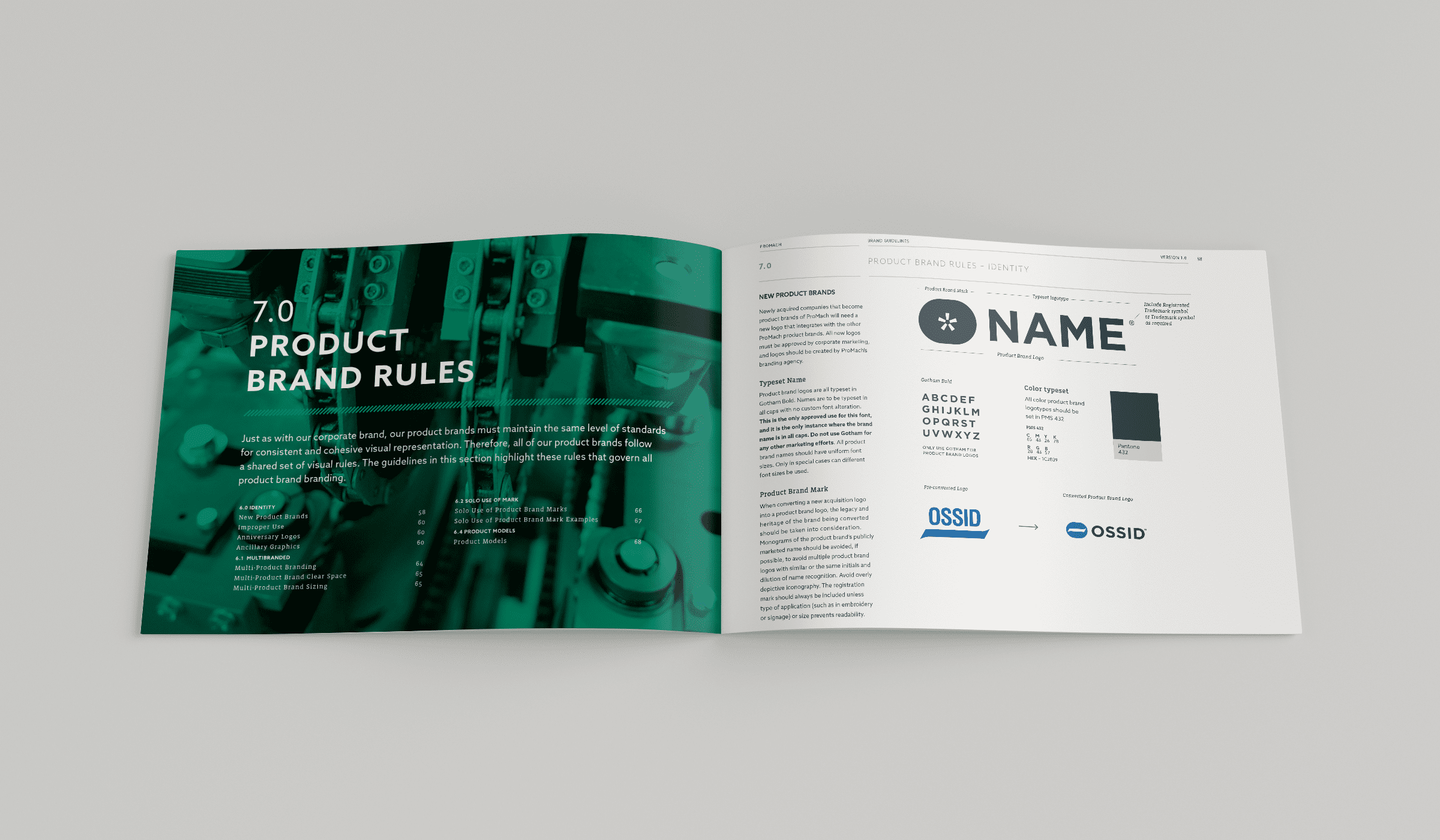
If your company has sub-brands, brand guidelines become a strategic tool to manage and maintain consistency while allowing each sub-brand to retain its unique identity. Here's how brand guidelines can be helpful in this business situation:
Establishing a Parent Brand Framework: Your brand guidelines should outline the overarching brand framework that governs the entire company and all its sub-brands. It defines the core values, mission, and vision that unite all sub-brands under the parent brand's umbrella.
Defining Sub-brand Relationships: Brand guidelines should clarify the relationships between the parent brand and its sub-brands, if desired. It should outline how each sub-brand relates to the parent brand, whether they share visual elements or marketing messaging or if they have distinct brand personalities.
Consistency in Parent Brand Elements: While each sub-brand might have its own visual identity and voice, certain parent brand elements should remain consistent across all sub-brands. This may include the primary logo, brand colors, and key messaging. Provide guidelines for incorporating these shared elements into each sub-brand's identity.
Driving Sub-brand Individuality: While maintaining consistency with the parent brand, brand guidelines should allow room for individuality within each sub-brand. It should specify the unique elements, such as logos, colors, typography, taglines, or messaging, that differentiate each sub-brand from the other and the primary brand.
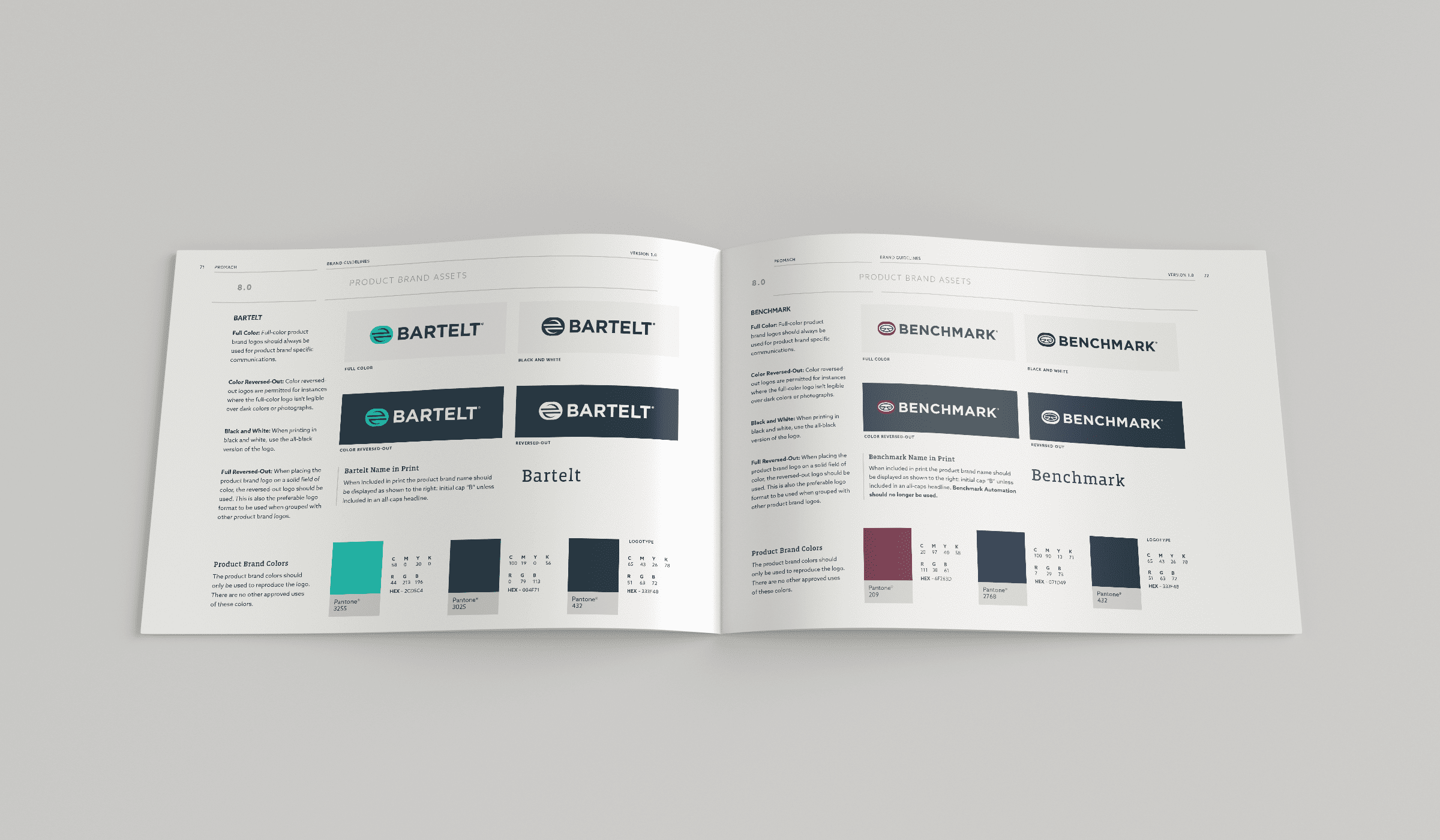
Balancing Autonomy and Unity: Brand guidelines should balance individual sub-brands' identities and a sense of unity among them. It provides a clear framework for decision-making when creating and evolving sub-brands.
Collaboration and Cross-Promotion: Your brand guidelines should outline the rules for collaboration and cross-promotion among sub-brands and with the parent brand. This ensures that partnerships and joint initiatives reinforce the overall brand strategy and avoid brand conflicts.
Efficient Marketing and Communication: With multiple sub-brands, marketing and communication efforts can become complex. Brand guidelines streamline the process by providing clear strategies and templates, ensuring all materials align with the parent brand's essence and sub-brands' distinct identities.
Brand Equity Protection: Well-crafted and clear brand guidelines protects the equity of both your parent brand and the sub-brands. It helps avoid brand dilution or confusion. As your company grows and introduces new sub-brands, the brand book becomes essential for onboarding and integrating new entities while preserving the parent brand's integrity.
.
With a complicated brand architecture, your brand guidelines provide a coherent and cohesive brand management framework that allows your company to maintain a strong parent brand identity while enabling each sub-brand to express its unique characteristics effectively.
The Elements in Brand Guidelines
No matter the size and structure of a company, comprehensive brand guidelines should include these items.
Brand Overview: This section should include the company’s history, timelines, mission, purpose, value proposition, positioning, customer personas, and elevator speech.
Messaging and taglines: Enhance the positioning and elevator speech by outlining key messages and taglines that define the brand. This section can also include internal messaging strategies about your company's mission and values.
Voice and tone: This section details your brand's personality, voice, and tone in written content, which helps maintain a consistent brand voice across all communication channels.
Logo usage: Include guidelines on displaying your logo, including all approved variations with proper sizing and spacing. This section could also include examples of what NOT to do with your logo.
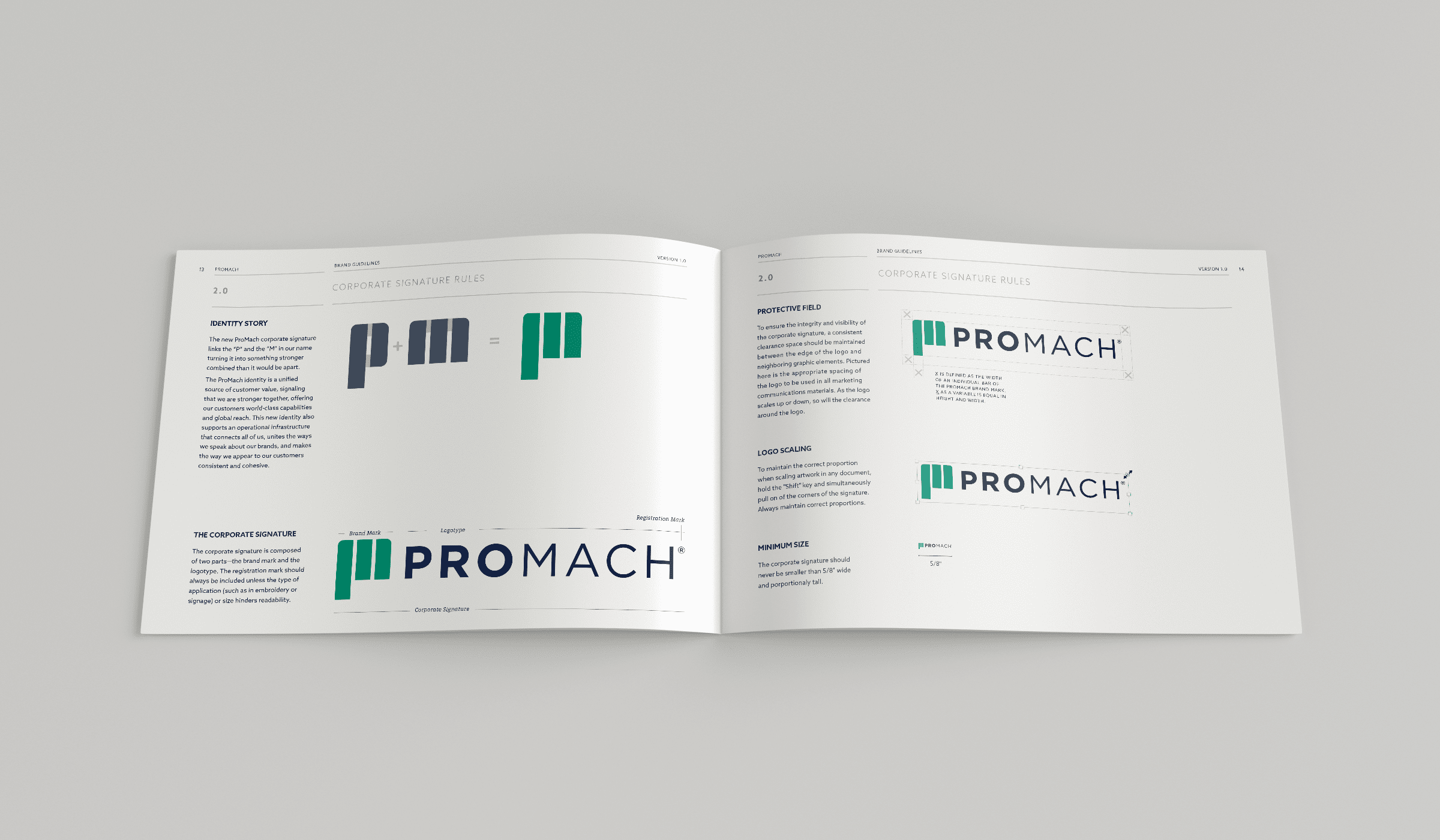
Color palette: This section should highlight the approved colors for your brand, including primary, secondary, and accent colors, along with their specific values (RGB, CMYK, and HEX codes).
Typography: List your preferred fonts in every context, including headings, body text, and captions. It’s important to identify system fonts, such as Times New Roman or Arial, as well as proprietary fonts so that all documents are “on brand” no matter in which program they are created.
Imagery: Set guidelines for the types of images that align with your brand's visual style in illustration, photography, and video. Include usage guidelines like size, resolution, and more.
Stationery and templates: Common templates for business cards, letterheads, email signatures, and other branded materials are usually included in a brand book.
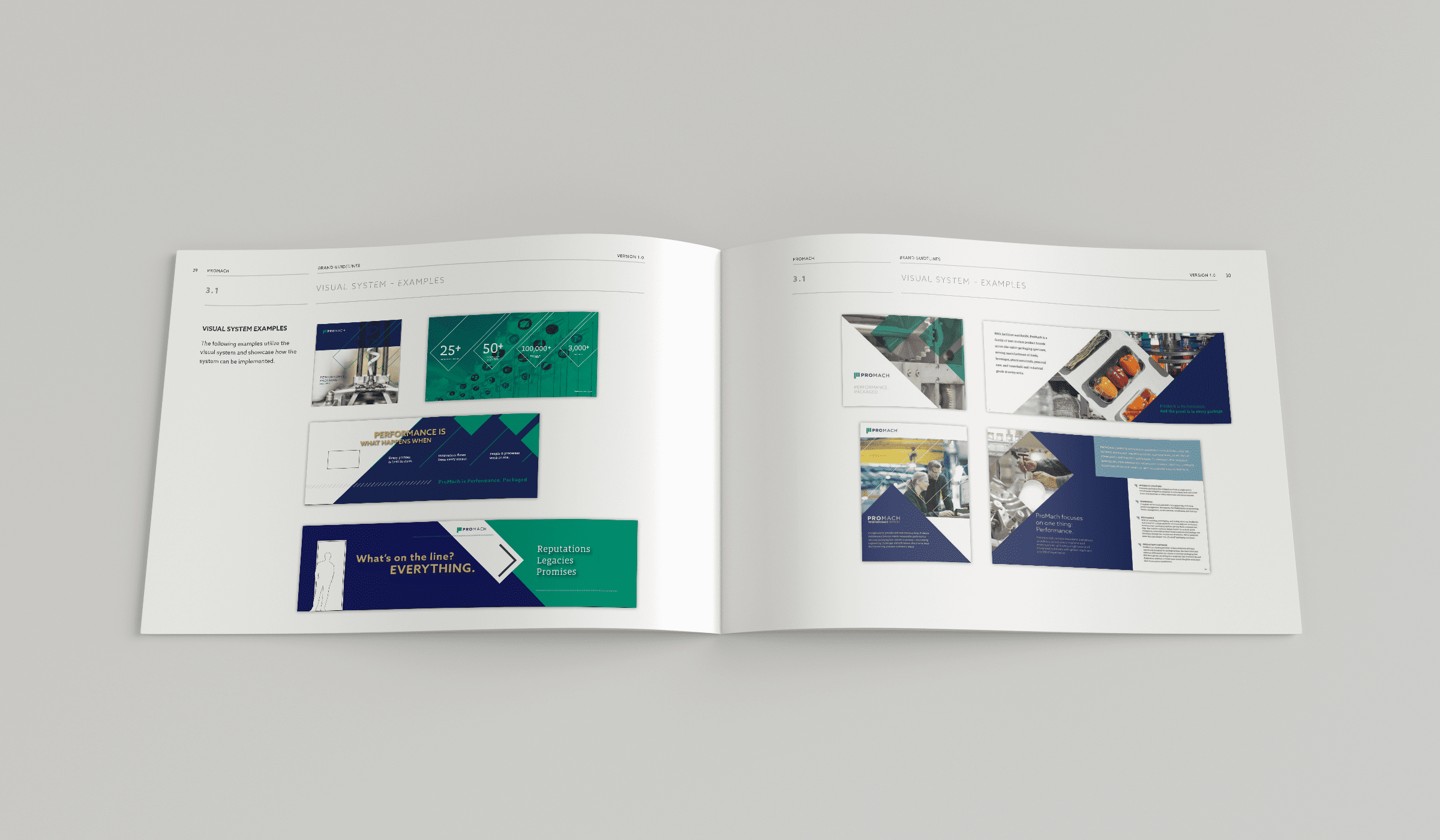
Web and social media guidelines: Because digital communication channels are so important, a good brand book will include design and content recommendations for websites, social media profiles, and posts to ensure a cohesive online presence.
Your brand book is a valuable resource for all stakeholders to understand and adhere to your brand's identity guidelines. It is an essential tool for maintaining brand integrity and creating a strong and recognizable brand in the eyes of consumers.
Another Safeguard
Brand governance takes maintaining brand consistency one step further. Brand governance ensures that brand guidelines are used across all touchpoints and interactions. This allows brands to maintain the integrity of a brand while allowing for appropriate adaptation to various contexts and channels.
One of the simplest ways to maintain brand governance is by placing brand guidelines on an online portal. This portal establishes a common place where all approved employees can access materials and assets approved for use. This portal ensures consistency across all touchpoints. A brand governance portal will support your brand in delivering a cohesive brand experience while achieving business objectives.
A Success Story – ProMach
ProMach is a family of best-in-class packaging solution brands serving manufacturers of all sizes and geographies in the food, beverage, pharmaceutical, personal care, and household and industrial goods industries. With 45 product brands under its wing, ProMach needed a fresh, cohesive brand message that could bring the entire global organization together. Phase 3 stepped in with research-driven insights to create a new brand platform that showcased ProMach's collective innovation and strength as a united organization. The team created a new brand identity for the corporate brand and a consistent architecture for the 45 sub-brands. Phase 3 also orchestrated an internal and external brand launch, including the development of the website, facility signage and branding, and collateral development. We pulled this new brand architecture, messaging, design, and assets into a cohesive brand book and a brand governance portal accessible to the entire company.

Whether you are just starting a business or managing a multi-million dollar marketing department, a comprehensive brand book is a valuable resource. Your brand guidelines should be reviewed regularly to check that your messaging is still on point and that your graphic elements are relevant and appealing to your target audiences. A branding and marketing agency, such as Phase 3, can be a valuable resource and thought partner as you create, manage, and evolve your brand. Give us a call today if we can be that resource for your brand.